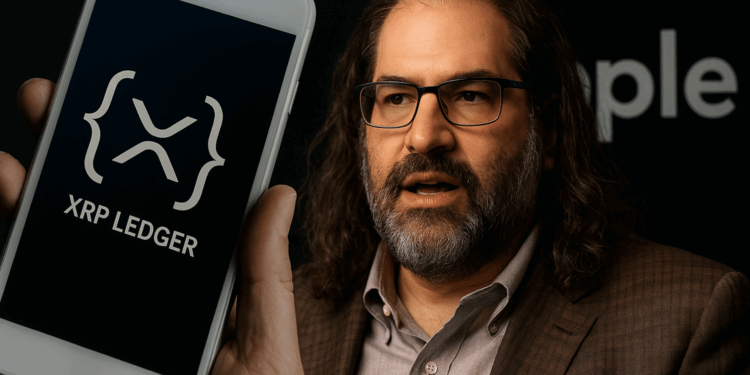- Ripple CTO David Schwartz denies Ripple has any “back door” control over the XRP Ledger, stating the company runs just 1% of validators.
- Major network changes require 80% validator approval, limiting the influence of any single participant.
- Ripple’s decentralization efforts include reducing its validator presence and relying on the XRP Foundation’s broader network.
Ripple’s Chief Technology Officer, David Schwartz, has addressed persistent claims that the company controls the XRP Ledger (XRPL), insisting there is no hidden mechanism or “back door” that allows Ripple to dictate network activity.
In an interview with Decrypt, Schwartz emphasized that while Ripple is a major contributor to XRPL’s development, it does not run the network. “We are a major contributor to the ecosystem. It is obviously very important to us,” he said. “But we have no interest or desire in running the network.”
Decentralization Concerns and Validator Count
Critics have long pointed to XRPL’s smaller validator set compared to networks like Bitcoin as a potential weakness. As of Wednesday, data from Bitnodes showed roughly 23,000 Bitcoin nodes worldwide, versus 186 XRPL validators listed on XRPScan.
Schwartz stressed that anyone can operate a validator and noted that Ripple currently runs just one validator, accounting for “something like 1% of the network.” Network-wide changes require approval from 80% of validators, preventing unilateral control by any single entity.
Transaction Censorship and Control of Supply
Schwartz said Ripple cannot and would not censor transactions, explaining that the company does not want the ability to block activity because it would make them vulnerable to outside pressure. “Nobody has ever had a transaction stopped by Ripple,” he said.
While Ripple does hold a large XRP reserve—about 38 billion XRP in escrow as of October—the CTO argued that token holdings do not equate to network control. Nonetheless, some critics contend Ripple’s ability to release and sell XRP could influence scarcity and market dynamics.
Unique Node Lists and Decentralization Efforts
XRPL’s security model uses Unique Node Lists (UNLs), where each validator maintains a trusted set of nodes. The XRP Foundation manages the default UNL, which used to include multiple Ripple-owned validators. Since July 2023, Ripple has run only one of the 35 validators on the Foundation’s default list.
This ongoing reduction in Ripple-operated validators has been part of its decentralization strategy since XRPL’s 2012 launch. “We don’t have any say over transactions,” Schwartz reiterated, pushing back against the idea that Ripple can override the network’s consensus process.














